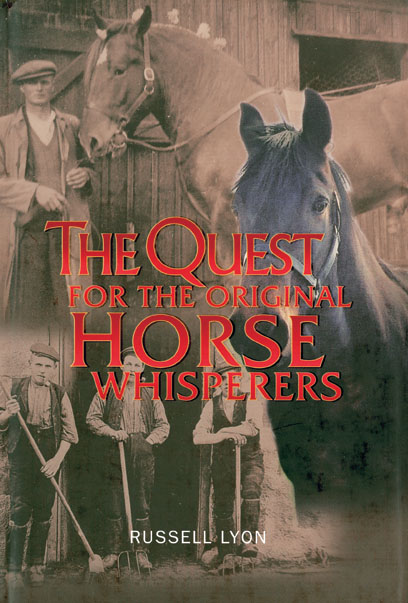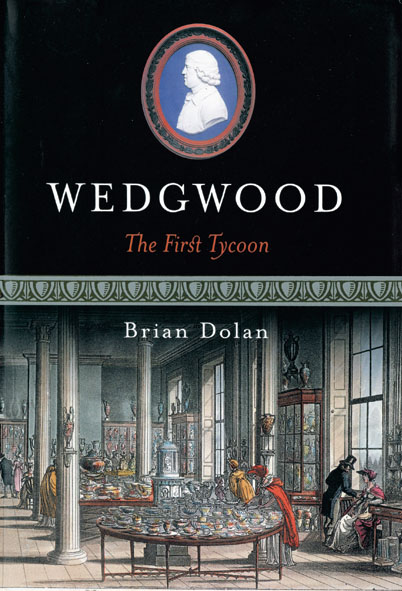
The Latest Books About Britain
[caption id="FirstEditions_img1" align="aligncenter" width="408"]

The Quest for the Original Horse Whisperers, by Russell Lyon, published by Luath Press Ltd, Edinburgh, Scotland, 169 pages, hardcover &dlooar;26.95.
WHEN IT COMES to “horse whisperers,” most North American readers know only as much as was contained in the acclaimed Robert Redford film of 1998, which was in turn based on a novel by Nicholas Evans. This is hardly surprising, since the Scottish origins of this seemingly mystical form of horse training were intentionally concealed beneath an oath of silence taken by initiates into the Secret Society of Horsemen during the 18th and 19th centuries.
Once an essential component of the everyday lifestyle and economy of rural Scotland, the art of horse whispering has been made obsolescent by mechanization. Diesel-powered tractors and harvesters now handle the work once done by teams of horses pulling a wooden plow. Two hundred years ago, though, the secret knowledge that could only be gained by becoming a member of the society made an initiated plowman an indispensable farmworker. Armed with a “secret word,” society members could tame horses that no one else could manage, seemingly by whispering into the horse’s ear.
Author Russell Lyon set out to uncover the secrets behind the secret society, and The Quest for the Original Horse Whisperers makes an interesting tale not just of the Society of Horsemen, but of the whole rural Scottish culture of the 1800s.
Lyon’s inquiries, somewhat surprisingly, yielded an extensive body of information about the hitherto secret society, information that tends to demystify the horse whisperers but at the same time provides intriguing insights into how their methods really worked. Though invoking occult symbols and hints of magic incantations to mislead outsiders, the plowmen employed sound, practical and down-to-earth techniques to coax their horse teams to seemingly supernatural obedience. Accordingly, the mystery was absolutely necessary in order for the horse whisperers to maintain their status as miracle-working “Doolittles.”
Here is an intriguing glimpse into a nearly forgotten corner of Britain’s heritage. This cornerstone of rural life in preindustrial Scotland touched the everyday lives of common folk in a way that the politics, arts and sciences never did. For that reason alone this is a must-read for anyone hoping to understand those days.
BRUCE HEYDT
English Battlefields: 500 Battlefields That Shaped English History, by Michael Rayner, published by Trafalgar Square Publishing, North Pomfret, Vt., 393 pages, hardcover $45.
MICHAEL RAYNER’S PURPOSE for writing English Battlefields is ambitious to say the least. The subtitle says it all, 500 Battlefields That Shaped English History. The value of this illustrated tome is that it aims to list every battle (including major naval and air actions) and every major siege and skirmish fought in England from as early as Roman confrontations in AD 43 to as recent as the Slapton Sands encounter of April 28, 1944. The dictionary-style entries are designed to be reference tools for explaining the “whys” of the confrontations and, perhaps more important in Rayner’s eyes, exploring the actual fields of conflict themselves. “By looking at and walking the landscape, one becomes aware of a range of facts which otherwise would probably be missed. The folds of the ground, lines of sight…” all play a part in understanding the participants and the events.
The foreword by Richard Holmes reinforces Rayner’s introduction and promises that the entries will give a “sense of the ground they fought on, and one of the great strengths of [the book] is its feel for the field.” However, some of the entries are only a few lines long and fail to provide any kind of geographical battlefield orientation, much less a “feel for the field.”
Entries such as the June 14, 1645, Battle of Naseby, however, describe at length the who, what, when, where and why. It also details how the building of a modern highway across part of the field of battle later galvanized activism to preserve other hallowed ground from such modern development. This account and many others like it fulfill the author’s promises. For these more substantial conflicts, Rayner provides helpful references for further reading. His passion for preservation comes through in these descriptions and motivates the reader to do as he suggests—walk the “haunted acres preferably in good company and with the reward of a good pint at the conclusion, over which the merits of the various interpretations can be debated.” If Rayner had limited the book to those fields of battle for which detailed descriptions exist and can be accessed today, he would have accomplished his mission.
ALLYSON PATTON
Wedgwood: The First Tycoon, by Brian Dolan, published by Viking, New York, 320 pages, $24.95.
[caption id="FirstEditions_img2" align="aligncenter" width="409"]

JOSIAH WEDGWOOD’S story is one of amazing success, a classic rags-toriches tale. Born in 1730, the 12th child of a potter who died bankrupt, he was provided with one advantage: a basic education. For his other assets—intellectual curiosity and the drive to succeed—his parents must have bequeathed him a wonderful set of genes, for he inherited nothing else. Surrounded by potters in the pottery district of Staffordshire, he naturally became a potter.
What distinguished him from the hundreds of other potters turning out the wares for England’s tables was his interest in improving the product. For most of his working life, he spent hours at the end of each workday testing different clays and glaze components. His first goal was a whiter glaze. He finally hit on one that he could reliably reproduce, and the result was creamware, which became known as Queen’s Ware when Queen Charlotte ordered a tea set. Orders for Queen’s Ware poured in. Aha! Publicity was a key, one he used extensively as he placed his new products with style setters among the gentility.
But Queen’s Ware sales began to taper off, a lesson he never forgot. Aha, again! He must constantly have a new product in the wings. He intuitively priced his wares high and would display only a few, understanding that the high price and perceived rarity would lend the objects the cachet of desirability. Marketing and innovation were important, but he found many other ways to ensure success. To keep his processes away from other potters, he used a division of labor so that his potters worked on only one aspect of a product.
Wedgwood’s workplace is considered one of the world’s first factories. To keep the best workers, he offered them housing they could keep through retirement and a rudimentary form of health insurance. Wedgwood’s name became the original brand name, and he was among the first to utilize showrooms, traveling salesmen and money-back guarantees.
Brian Dolan tells Wedgwood’s tale well. The potter’s drive seems to permeate the book, impelling the reader on. The only drawback to Wedgwood: The First Tycoon is illustration. Though there are 26 black-and-white illustrations of pottery, people and places, reading this book made me want to be able to see, in color and in greater variety, the work that was such an enormous part of the life of Josiah Wedgwood.
JUDY P. SOPRONYI
[caption id="FirstEditions_img3" align="aligncenter" width="402"]






Comments